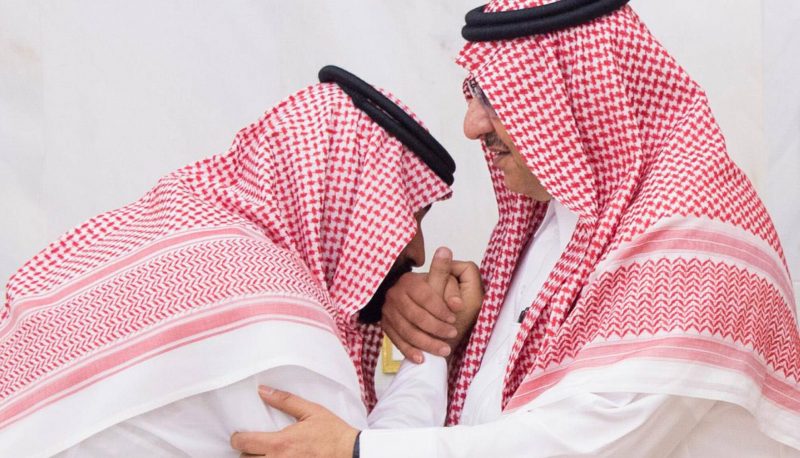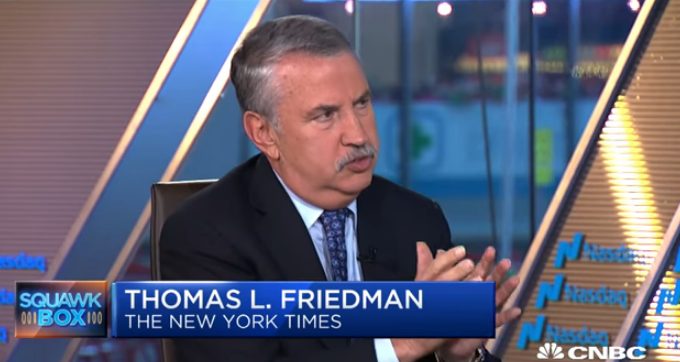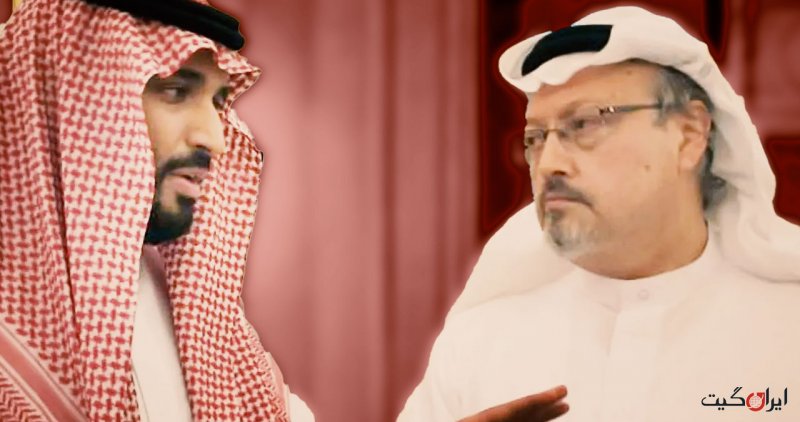Mohammed bin Salman is now one of us
Mohammed bin Salman is now one of us. Those who have somewhat weak memories or those whose memories are so strong that they remember the consequences of oil market tensions in past decades and want to forget those days at any cost have forgotten the October days of 2018. They wish to deal with a country that might be able to control the fire engulfing the oil market, if not extinguish it entirely. The code name for the strange era of October 2018 was ‘saw’.
In the early days of October 2022, on the fourth anniversary of Jamal Khashoggi’s death at the hands of Saudi security forces in Istanbul, Turkey, the last words he uttered in his life are revived for journalists, political activists, and especially his colleagues: ‘I can’t breathe’.
The last week of July marked the end of an era and the beginning of a new one for the Saudi Crown Prince. For the first time in four years, he embarked on a European tour and was warmly welcomed by the Greek Prime Minister. Following that, he spent a special visit to France under unique conditions and with particular anticipation.
Before these European trips, the American President had traveled to the Middle East, and the outcomes of Biden’s trip had consequences that the young Crown Prince wanted to see. Bin Salman was waiting, and still is, to see what reactions there will be to the cooperation and concessions the U.S. gave and what it did and didn’t do in the oil market for Biden and his allies. We must wait for the period after the November elections in the U.S. to reach a complete assessment.
What might be important are the achievements of these few months, which apparently indicate that bin Salman is becoming a ruler like other Middle Eastern rulers. Is this really the case?
The beginning of the story has not been forgotten.
Mohammed bin Salman bin Abdulaziz is not the first son of the Saudi King and is, of course, the beloved son of King Salman. The Saudi King is the last son of King Abdulaziz to sit on the throne of the world’s largest oil giant. After him, the future Saudi monarchy was taken from Mohammed bin Nayef, the Crown Prince appointed by the Saudi Emirate Council, and transferred to his son, who had already made a name for himself in domestic and foreign politics.
The beginning of Mohammed bin Salman’s story and his crown prince status should not be forgotten. He, who now officially holds the position of cabinet head, turned 37 a month ago, and his distance from the throne is as close as the heartbeat of his father, which occasionally becomes the top news and rumors worldwide.

The beginning of his story is tied to the massive Vision 2030 project in domestic policy, the grim war in Yemen in regional policy, and the rise of Donald Trump in the U.S. These three areas are vital foundations in describing his current conditions. Bin Salman’s special ties with international political figures in Israel and the UAE and his alignment with special figures worldwide have shaped the developments of recent years and influenced the situation in the Middle East and other regions. In the initial sections of special reports about the Crown Prince and Saudi Prime Minister, we address these initial points.
Vision 2030
In 2016, when he was not yet 32, young Mohammed bin Salman announced the grand SAUDI VISION 2030 in the name of King Salman and with his own central role. This grand plan, which presented the dream of Saudi economic, political, social, and cultural development, was entrusted to the large Council of Economic and Development Affairs of Saudi Arabia, with its presidency naturally given by King Salman to his dear son.
At that time, bin Salman was the third person in the Saudi royal structure and the Deputy Crown Prince. His important position during that period, which he maintained until recently, was the Ministry of Defense, which solidified his control over the army. With these positions and the conditions of involving his country in the grim war in Yemen, young bin Salman promised serious cultural reforms in the form of Vision 2030. They promised to prioritize addressing women’s civil rights, granting them the right to drive, and following that, other social and cultural reforms would arrive, dismantling the religious police and reducing strictness and violations of citizens’ civil rights.

The proposed economic and development programs of this vision have historically costly implications, and several large-scale tourist, commercial, and industrial projects have been designed and implemented or at least initiated. The start of social reforms took place significantly later than the unveiling ceremony of the plan, and many aspects of apparent reforms in civil rights discussions were seriously observed during the finalization of bin Salman’s crown prince status or in the months before.
For bin Salman, above all, competing with Dubai as a major tourism hub was important, and being able to build a new structure for the oil industry and Aramco was naturally an idea suggested to him by his Western advisors. It was no surprise that large tourist projects, unprecedented cultural and artistic programs, opening cinemas, holding concerts, and such were easily and quickly initiated alongside extraordinary economic and construction projects.
It should be remembered here that the murder of Jamal Khashoggi had a deadly impact on bin Salman’s cultural and tourist programs. One example of these impacts was the severance of cooperation from important Western figures with the Saudis in managing and providing consultancy for attractive tourism and cultural projects.
Praise, Encouragement, and Promotion
A wave of promotional activities to promote and spread news about the young Saudi reformer enveloped the world. These developments occurred while the Obama administration, albeit reluctantly, had to provide relative support for bin Salman’s programs and the Saudi army in Yemen. The Yemen war ignited enthusiasm for war and defense in Saudi Arabia, and for the first time, the concept of patriotic militarism was promoted under the leadership of young bin Salman among Saudi citizens.
This was parallel to the continued suppression of the Shia minority and serious pressures on civil activists. The reforms that had not yet started in 2016 and 2017 were not intended to have any leadership other than bin Salman, and in the years following, civil activists experienced pressures, imprisonment, and torture to erase their memory and name. The reformer is bin Salman and no one else.
By the time bin Salman’s crown prince status arrived, praise and admiration for the initiated reforms had begun, and after his crown prince status, these praises and admirations were gradually intensified by a specific range of Western media. There is no doubt that Saudi money played a primary role in the rise of these praises. It should be seriously noted that many of the important events of bin Salman’s first year as crown prince were hard to justify.
The public kidnapping of Saad Hariri and efforts to force his resignation and change Lebanon’s policy, the hostage-taking and torture of wealthy Saudi princes, and the confiscation of their wealth, and other stories that we will address occurred while the media began a new round of praise for cultural and social changes in Saudi Arabia.

To show the depth of this strange and unjustifiable propaganda, we must refer to one of the heroes of this Saudi media campaign, none other than Thomas Friedman, the famous journalist who, in late November 2017, published a famous article about his trip to Saudi Arabia and his conversation with Mohammed bin Salman. This article astonished many, and Friedman’s praise of the Arab Spring in Saudi Arabia with bin Salman’s reforms was beyond anyone’s expectations.
Friedman did not back down and went from one news network to another, promoting his article and trip, and of course, much faster than he imagined, he found himself cornered by American media and really had to defend himself. His interesting justifications had to describe all the events we mentioned as inappropriate, and thus very simply, Friedman and other promoters of bin Salman’s reforms, by accepting the badness of some of the Crown Prince’s actions, spoke of concerts, cinemas, women’s driving, and combating extremism.
This open space for justifying bin Salman’s dirty deeds in that year and before all the stories of 2018 occurred thanks to Iran’s mistakes and its transformation into the West’s number one enemy and Saudi money spent in the media.
Soon, in the next section of the report, we will address another part of the beginning of bin Salman’s story, a beginning that is tied to Trump, America, and the internal security of that country.
The next part of this article titled ‘Mohammed bin Salman is now one of us – Part Two’ has been published in Iran Gate.
Exclusive and Recommended Articles from Iran Gate
- Saudi Arabia Begins Weapons Purchases from Israel
- Peace Diplomacy Sacrificed to Internal and External New Fields

